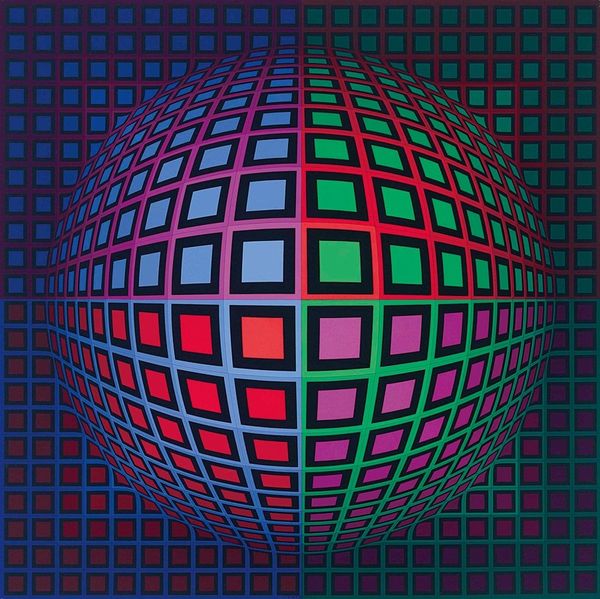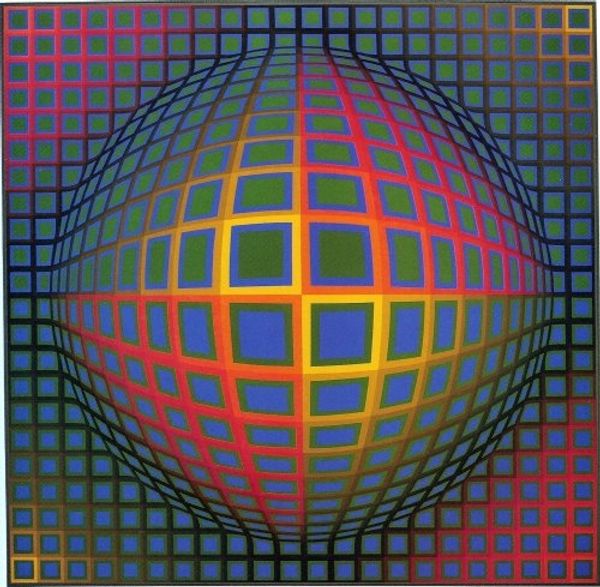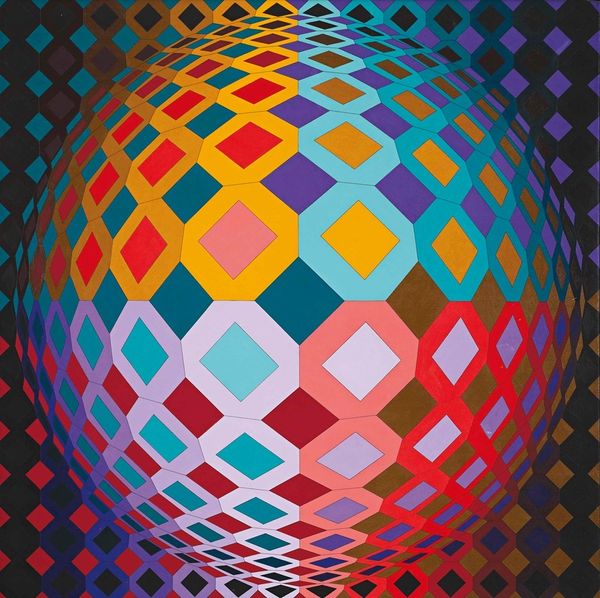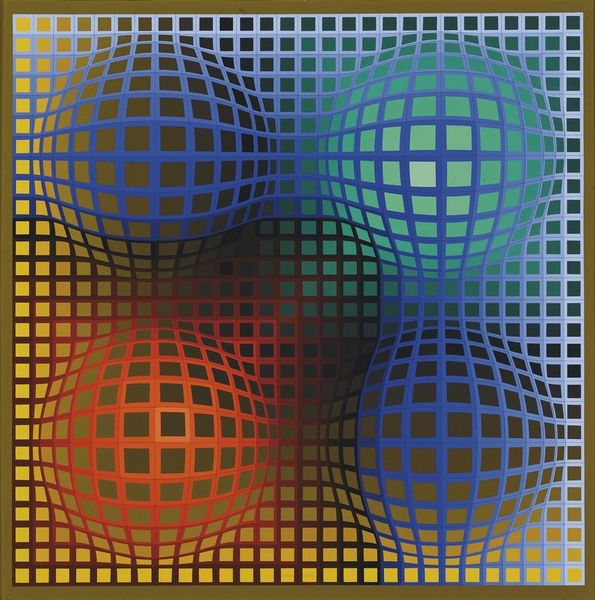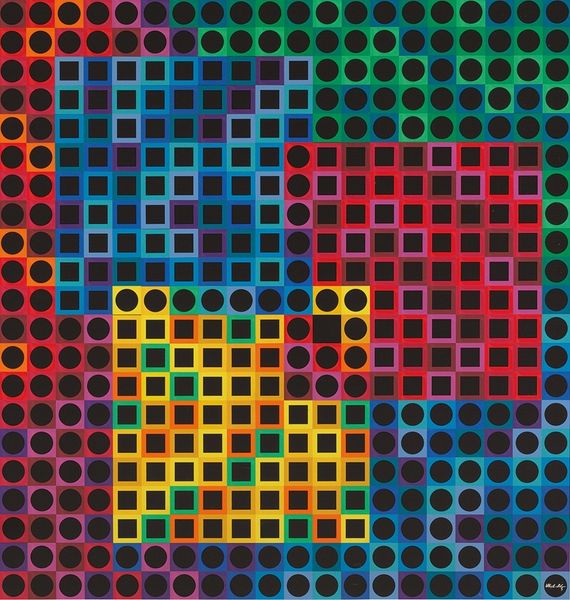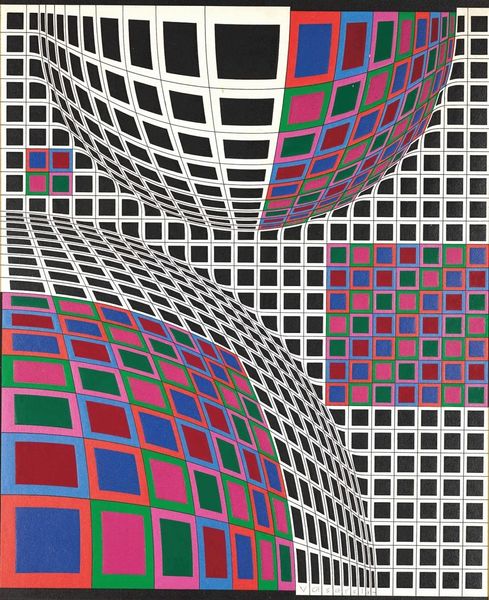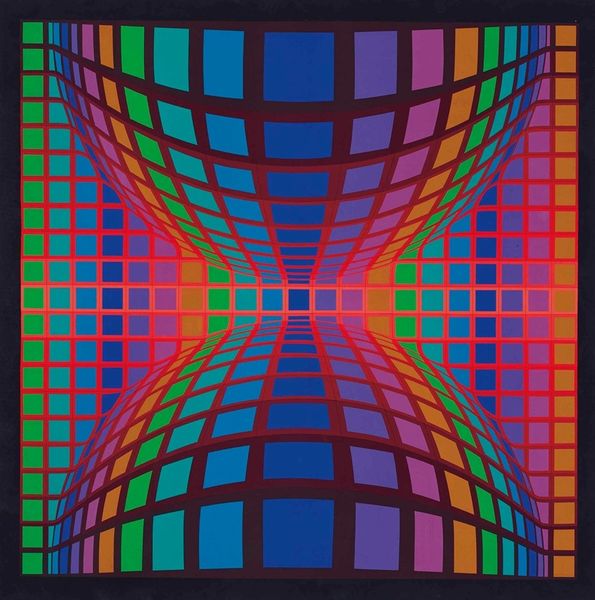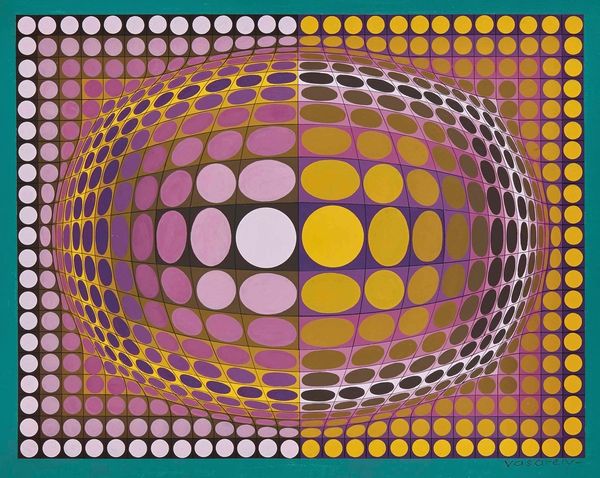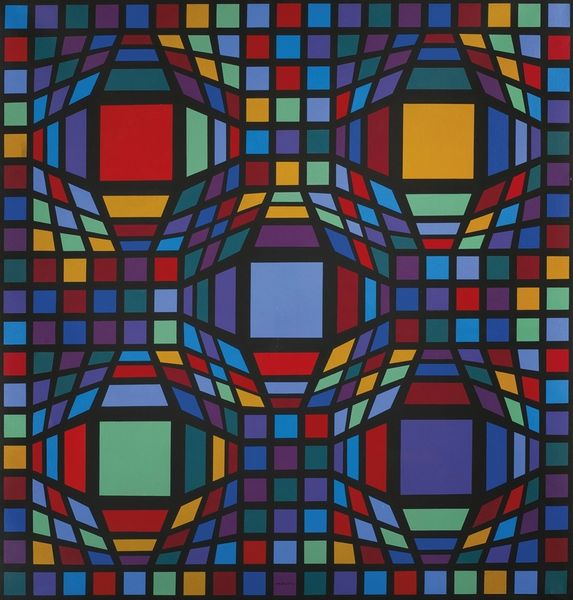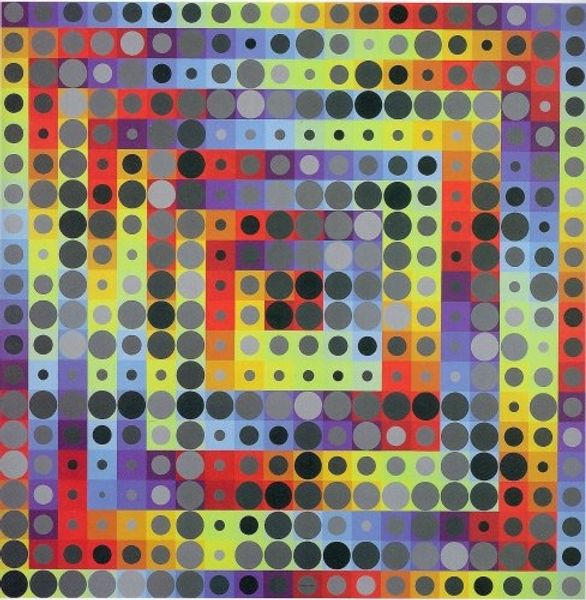
acrylic-paint
#
op-art
#
acrylic-paint
#
abstract
#
geometric pattern
#
abstract pattern
#
minimal pattern
#
organic pattern
#
geometric
#
flower pattern
#
abstraction
#
intricate pattern
#
pattern repetition
#
layered pattern
#
funky pattern
#
modernism
#
hard-edge-painting
#
repetitive pattern
Copyright: Modern Artists: Artvee
Curator: Here we have Victor Vasarely’s "Vega-majus," a striking acrylic on canvas completed in 1969. The interplay of colour and geometry practically jumps off the surface. What are your initial thoughts? Editor: Dazzling. There’s an almost unsettling sense of depth, or perhaps a convexity that plays with the eye. It gives the impression of a distorted grid, pushing outwards from the centre. Curator: The Op Art movement, which Vasarely pioneered, aimed precisely for that sort of disorienting, active viewing experience. The meticulously arranged squares of varying hues and subtle distortions create the illusion of a pulsating, three-dimensional form on a two-dimensional plane. This subversion of perceptual expectations makes it compelling. What symbolism do you see in a form like this? Editor: Well, considering its creation in the late 60s, I can’t help but see echoes of the Space Age optimism. A grid, normally a symbol of order and control, warped into a seemingly expanding sphere perhaps symbolizes the era's ambition to reshape our understanding of the universe. There's an undeniable sense of progress. Curator: Interesting. For me, the interplay of geometric forms with vivid color points towards something deeper than simple futuristic enthusiasm. The repeated grid, while warped, hints at a universal order, with individual colours representing the multifaceted elements that comprise it. There is an attempt to codify perception into pure shapes, creating, perhaps, a psychological connection to the infinite. The bright colours definitely hold positive psychological impact as well. Editor: I suppose it depends on one's reading of that "universal order." To me, this feels very much a product of its time, embedded in the social and political climate. The late '60s were also marked by increasing anxieties. The disrupted grid could be seen as a reflection of social fragmentation, a breakdown of traditional structures manifested in abstract form. Was Op Art perhaps hinting at the breakdown of older conventions and institutions, rather than the emergence of an infinite universal connectivity? Curator: A darker interpretation, perhaps, but one certainly grounded in the era’s complexities. Perhaps Vasarely consciously or unconsciously captured both sentiments, the utopian and the dystopian. Editor: Indeed. Regardless, "Vega-majus" stands as a powerful artifact of a period defined by both intense hope and equally intense apprehension. It really is one of a kind. Curator: And with a legacy that continues to stimulate dialogue about how we see and understand the world around us.
Comments
No comments
Be the first to comment and join the conversation on the ultimate creative platform.
